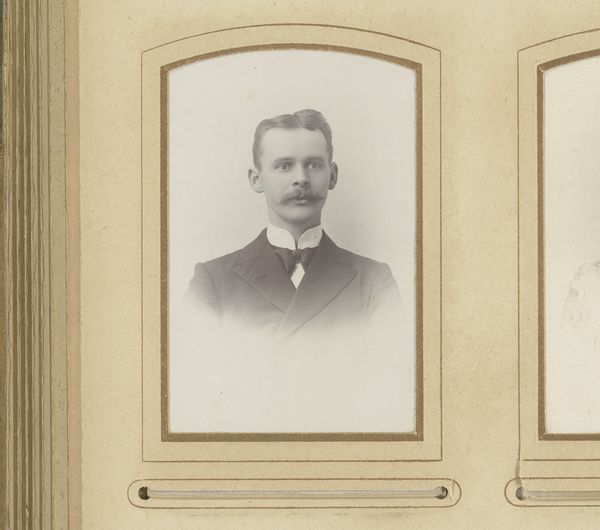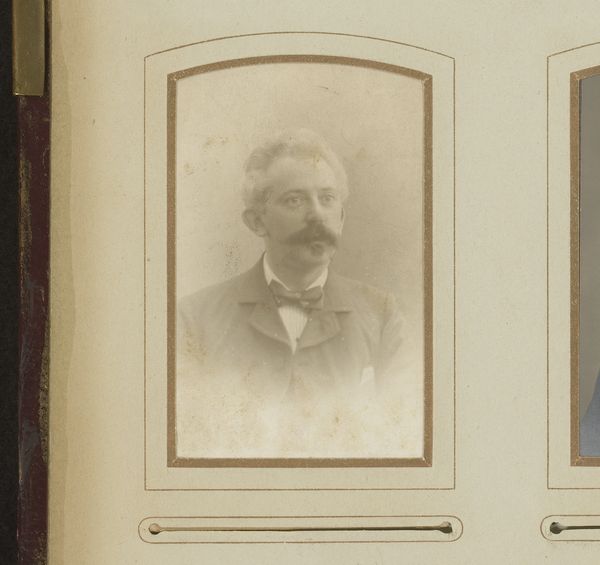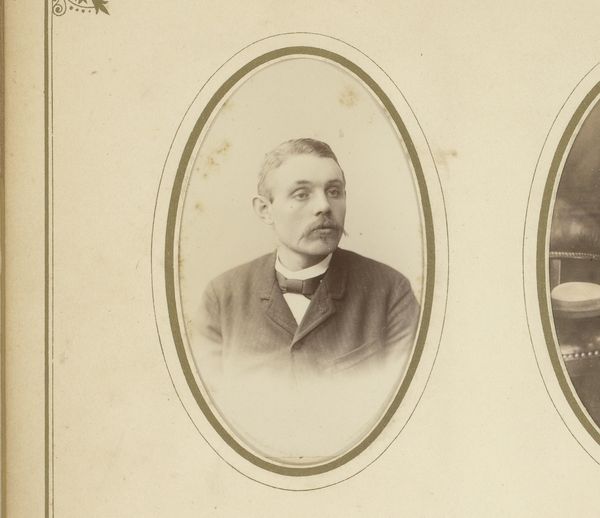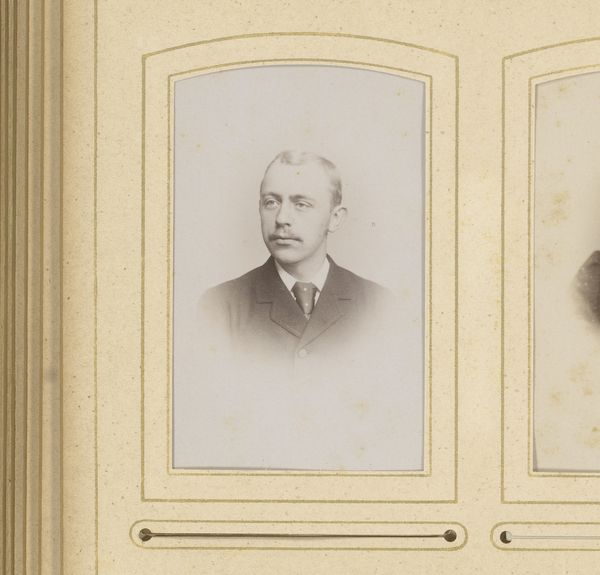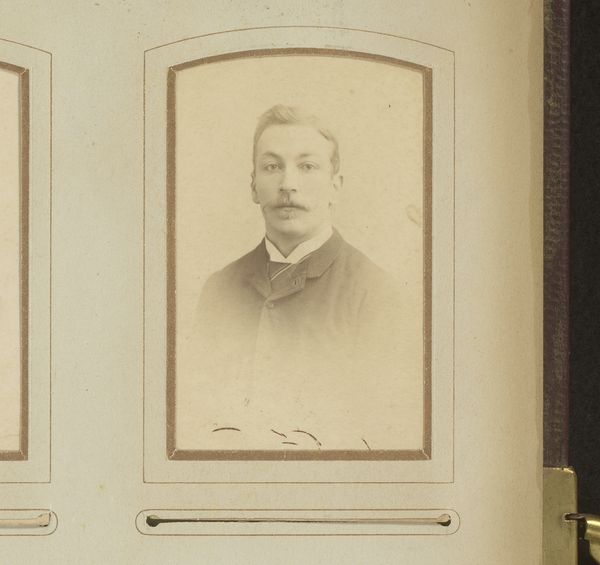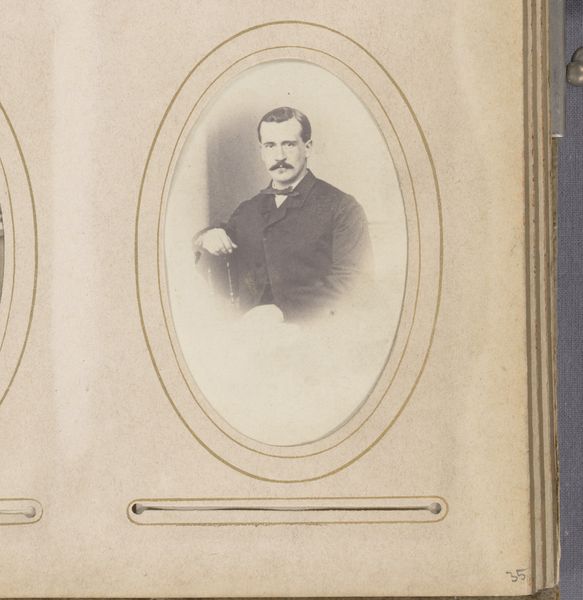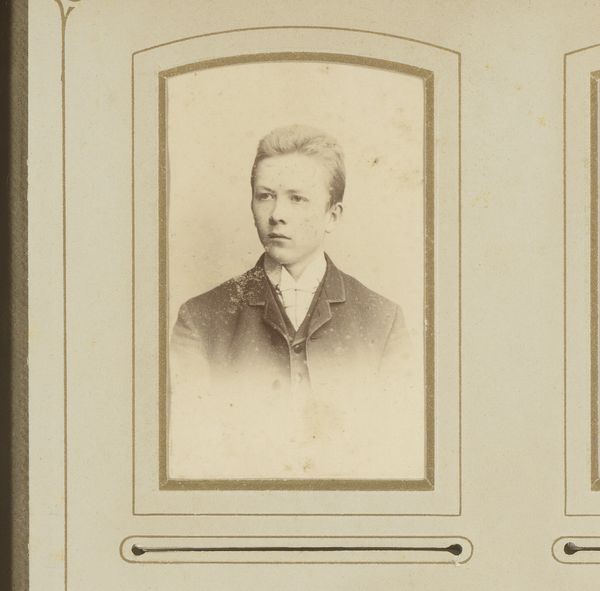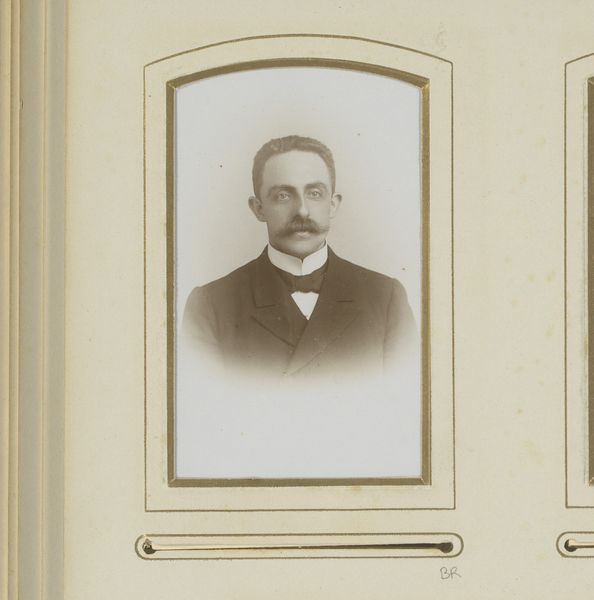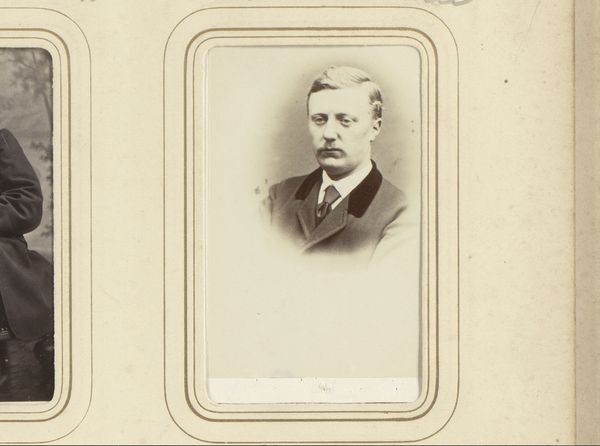
photography
#
portrait
#
photography
#
realism
Dimensions: height 83 mm, width 52 mm
Copyright: Rijks Museum: Open Domain
Editor: Here we have a photograph, "Portret van een man met snor," made sometime between 1875 and 1900 by Wegner & Mottu. It's striking how the subject's gaze seems to both meet and evade the viewer. What social and historical narratives do you see at play here? Curator: This photograph, rendered in the realistic style popular at the time, speaks volumes about the construction of masculinity in the late 19th century. The mustache, the tailored suit—they signal a specific kind of bourgeois identity. But look closer. Consider the conventions of portraiture at the time; how do they shape and potentially confine our understanding of this individual? What unspoken codes do you think the portrait attempts to reveal, or perhaps conceal? Editor: I see the conformity to societal expectations but the averted gaze perhaps hints at some degree of internal conflict. Do you think this portrait can be considered as a reflection of the social tensions experienced by men in that era? Curator: Precisely! We must remember that societal expectations, especially those tied to gender, were intensely policed. Could this slight unease reflect the anxieties inherent in upholding these prescribed roles? It prompts us to think about the limitations imposed by societal structures, then and now, and their effects on personal expression. Also, think about how this image could have been used and interpreted when it was made and distributed compared to its meaning and interpretation now. Editor: That’s really insightful. I never thought about photography as a record and constructor of social codes in that way before. Thank you. Curator: And thank you. Thinking through photography this way reminds me of the role that portraits played in either enforcing or subverting racial, class, and gender hierarchies, prompting me to reconsider how such codes still resonate today.
Comments
No comments
Be the first to comment and join the conversation on the ultimate creative platform.
